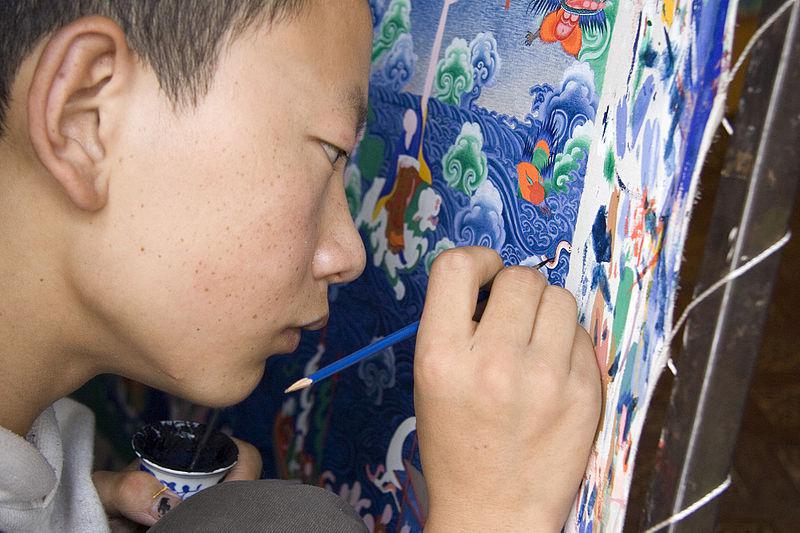Thangka: Asian Canvas Art
Posted on 10th Aug 2014

Thangka is an Asian canvas art created by Buddhist artists mostly in Tibet. Thangka means “cloth or silk painting scroll capable of being spread for appreciation”(1). The colors used in painting thangka are lively and bright. It is also adorned with real gold dust in the end. What are painted are the buddhas and boddhisatvas in the Buddhist tradition most often, but other themes are: “ Tibetan medicine, historical events, biographies, customs, legends and fairytales, involving politics, economy, history, religion, literature, art, and social life”(1).
How Thangka is made
The canvas is tide tightly on a wooden board using a string. The canvas is then applied with glue on both sides. It is then applied with gypsum powder and then polished by pebbles and shells. A carbon stick is used to draw the contours and a pencil is used to draw the lines. For the paint, natural mineral dye is used and for the embellishment, gold dust is used. In mounting the painting, the edges of the painting is placed with multicoloured brocade and then the top and bottom are rolled onto a wood to make a scroll. Afterwards it is sent to a monastery or temple so that the monks could bless it making it now holy.
Thangka sizes
A thangka can be as small as a palm of the hand, or it could be as big as a hill (see “Show of Colored Drawings on Literature and Art of Tibetan Ethnic Group of China” which took 4 years to make).

Reference:
(1) Tan, S. (2008). Craftworks of China. China: China Intercontinental Press.
 Loading... Please wait...
Loading... Please wait...